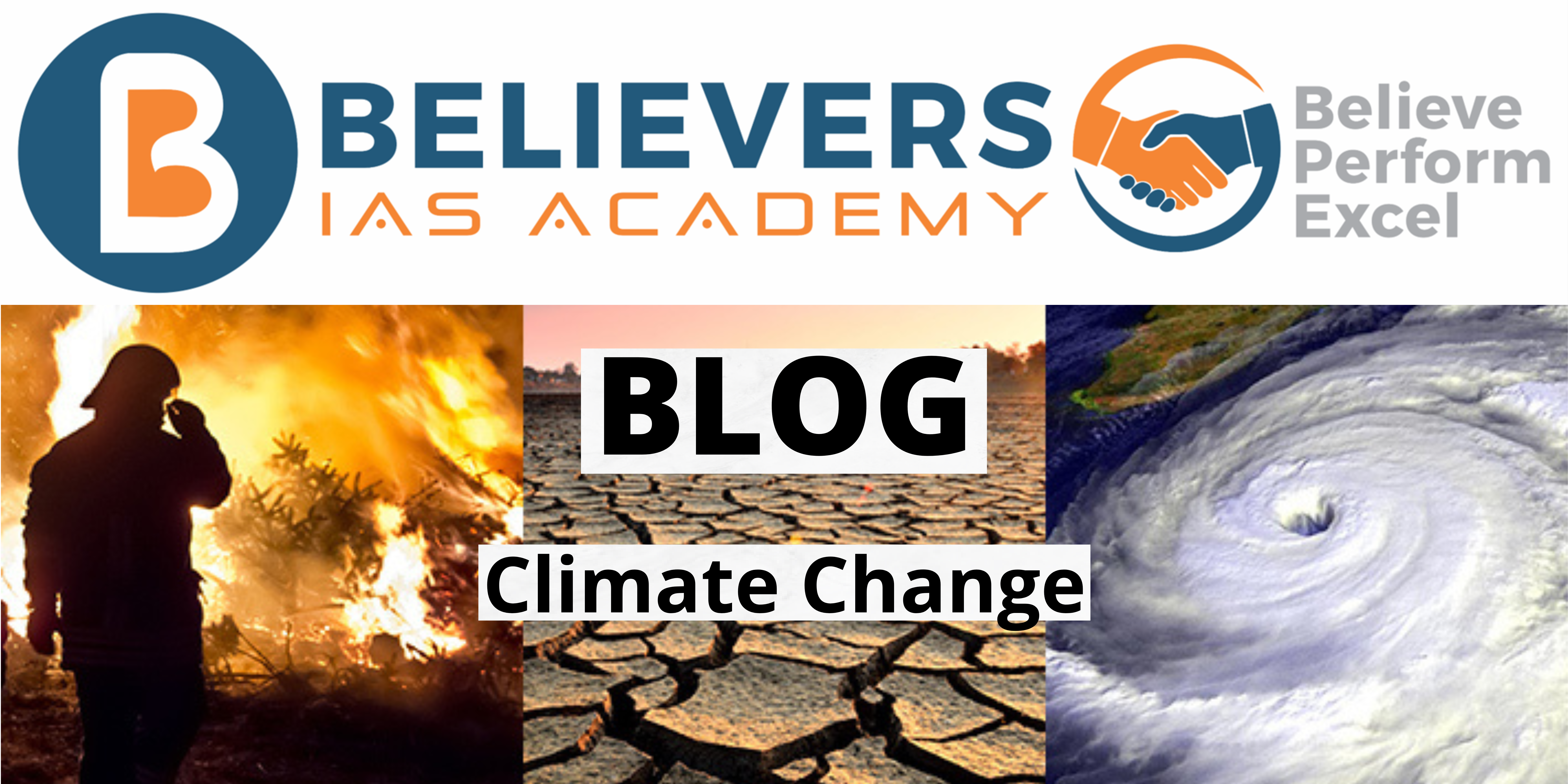Climate Change
Part 1
- Climate change refers to long-term shifts in temperatures and weather patterns.
- These shifts may be natural, such as through variations in the solar cycle.
- But since the 1800s, human activities have been the main driver of climate change, primarily due to burning fossil fuels like coal, oil and gas.
How does human activities impact climate:
- Human activities such as burning fossil fuels generates greenhouse gas emissions that act like a blanket wrapped around the Earth, trapping the sun’s heat and raising temperatures.
- This is done through a phenomenon known as Greenhouse effect.
What is greenhouse effect?
- The greenhouse effect is a process that occurs when gases in Earth’s atmosphere trap the Sun’s heat.
- About half the light energy reaching Earth’s atmosphere passes through the air and clouds to the surface, where it is absorbed and radiated in the form of infrared heat.
- About 90% of this heat is then absorbed by greenhouse gases and re-radiated, slowing heat loss to space.
Human activities and Greenhouse effect:
- Gasses such as methane, CO2 and others are called as Greenhouse gasses due to their ability to trap infrared radiation reflected back to space from earth’s surface.
- Burning fossil fuels like coal and oil puts more carbon dioxide into our atmosphere.
- Landfills for garbage are a major source of methane emissions.
- Energy, industry, transport, buildings, agriculture and land use are among the main emitters of greenhouse gases.
Evidence of Climate Change
Rising global temperature:
- The planet’s average surface temperature has risen about 1 degrees Celsius since the late 19th century.
- Most of the warming occurred in the past 40 years, with the seven most recent years being the warmest.
- The years 2016 and 2020 are tied for the warmest year on record.
The Ocean Is Getting Warmer:
- The ocean has absorbed much of this increased heat, with the top 100 meters of ocean showing warming of more than 0.33 degrees Celsius since 1969.
The Ice Sheets Are Shrinking:
- The Greenland and Antarctic ice sheets have decreased in mass.
- Data from NASA’s Gravity Recovery and Climate Experiment show Greenland lost an average of 279 billion tons of ice per year between 1993 and 2019, while Antarctica lost about 148 billion tons of ice per year.
Glaciers Are Retreating:
- Glaciers are retreating almost everywhere around the world including in the Alps, Himalayas, Andes, Rockies, Alaska, and Africa.
- Greenland is warming almost twice as fast as Antarctica, which is causing the ice to melt and raise global sea levels.
Snow Cover Is Decreasing:
- Satellite observations reveal that the amount of spring snow cover in the Northern Hemisphere has decreased over the past five decades and the snow is melting earlier.
Sea Level Is Rising:
- Global sea level rose about 8 inches (20 centimeters) in the last century.
- The rate in the last two decades, however, is nearly double that of the last century and accelerating slightly every year.
- An indicator of current global sea level as measured by satellites, updated monthly.
Arctic Sea Ice Is Declining:
- Both the extent and thickness of Arctic Sea ice has declined rapidly over the last several decades.
- Arctic sea ice extent both affects and is affected by global climate change.
Extreme Events Are Increasing in Frequency:
- The number of record high temperature events in the World has been increasing, while the number of record low temperature events has been decreasing, since 1950.
Ocean Acidification Is Increasing:
- Since the beginning of the Industrial Revolution, the acidity of surface ocean waters has increased by about 30%.
- This increase is due to humans emitting more carbon dioxide into the atmosphere and hence more being absorbed into the ocean.




